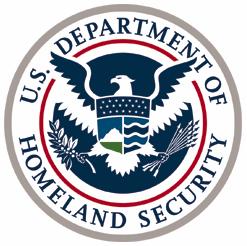Primary Investigators
Selected Publications of Dr. Haas
Quantitative Microbial Risk Assessment, C.N. Haas, J.B. Rose and C.P. Gerba, John Wiley (NY) (1999).
"Importance of Distributional Form in Characterizing Inputs to Monte Carlo Risk Assessments", CN Haas, Risk Analysis, 17(1):107-113 (1997).
"Managing Health Risks from Drinking Water -- A Report to the Walkerton Inquiry", Journal of Toxicology and Environmental Health -- Part A, 65:1635-1823 (2002). D. Krewski, J. Balbus, D. Butler-Jones, C. Haas, J. Isaac-Renton, K.J. Roberts, and M. Sinclair.
"The Role of Risk Analysis in Understanding Bioterrorism", C.N. Haas, Risk Analysis, 22(4):671-7 (2002).
"On the Risk of Mortality to Primates Exposed to Anthrax Spores", C.N. Haas, Risk Analysis, 22(2):189-93 (2002).
"Risk Assessment of Waterborne Coxsackievirus", K.D. Mena, C.P. Gerba, C.N. Haas and J.B. Rose, Journal of the American Water Works Association, 95(7):122-131 (2003).
“Neural Networks Provide Superior Description of Giardia lamblia Inactivation by Free Chlorine”, C.N. Haas, Water Research, 38:3449-57 (2004).
“CFD Design Approach for Chlorine Disinfection Processes”, D.J. Greene, B. Farouk, C.N. Haas, Journal of the American Water Works Association, 96(8):138-150 (2004).
D. Krewski, J. Balbus, D. Butler-Jones, C. N. Haas, J. Isaac-Renton, K. J. Roberts, and M. Sinclair. Managing the microbiological risks of drinking water.” Journal of Toxicology and Environmental Health 67:1591-1617, 2004.
“Inactivation of Cryptosporidium parvum with Ozone in Treated Drinking Water”, L. Li and C.N. Haas, Journal of Water Supply: Research and Technology – AQUA, 53(5):287-97 (2004).
“Estimation of bioaerosol risk of infection to residents adjacent to a land applied biosolids site using an empirically derived transport model”, J.P. Brooks B.D. Tanner, C.P. Gerba, C.N. Haas and I.L. Pepper, Journal of Applied Microbiology, 98: 397-405 (2005).
“A National Study on the Residential Impact of Biological Aerosols from the Land Application of Biosolids”, Journal of Applied Microbiology 99:310-22 (2005), JP Brooks, BD Tanner, KL Josephson, CP Gerba, CN Haas and IL Pepper.
“Chlorine and Ozone Disinfection of Encephalitozoon intestinalis Spores”, DE John, C.N. Haas, N. Nwachuku and C.P. Gerba, Water Research 39(11):2369-75 (2005).
“Use of CFD for Wastewater Disinfection Process Analysis: E.coli Inactivation with Peroxyacetic Acid (PAA)”, International Journal of Chemical Reactor Engineering, 3(A46) (2005), Domenico Santoro, Timothy A. Bartrand, Dennis J. Greene, Bakhtier Farouk, Charles N. Haas, Michele Notarnicola and Lorenzo Liberti.
“Assessment of Benefits from Use of Antimicrobial Hand Products: Reduction in Risk from Handling Ground Beef”, International Journal of Hygiene and Environmental Health, C.N. Haas, J. Marie, J. Rose and C.P. Gerba, 208:461-6 (2005).
“Inactivation of Enteric Adenovirus and Feline Calicivirus by Ozone”, J.A. Thurston-Enriquez, C.N. Haas, J.A. Jacangelo and C.P. Gerba, Water Research, 39(15):3650-3656 (2005).
“Validation of Batch Disinfection Kinetics of Escherichia coli Inactivation by Monochloramine in a Continuous Flow System”, Environmental Engineering Science, 22(5): 567-577, L. Li, B. Kaymak and C.N. Haas.
"It’s Not the Heat, It’s the Humidity: Wet Weather Increases Legionellosis Risk in the Greater Philadelphia Metropolitan Area " Journal of Infectious Diseases 192: 2066-73 (2006), D.N. Fisman, S. Lim, G.A. Wellenis, C. Johnson, P. Britz, M. Gaskins, J. Maher, M.A. Mittleman, C.V. Spain, C.N. Haas and C. Newbern.
“Computational Fluid Dynamic Analysis of the Effects of Reactor Configuration on Disinfection Efficiency”, Water Environment Research 78(9):909-919 (2006), DJ Greene, CN Haas and B Farouk.
“A Quantitative Microbial Risk Assessment Model for Legionnaires‚ Disease: Assessment Of Human Exposures For Selected Spa Outbreaks”, TW Armstrong and CN Haas, Journal of Occupational & Environmental Hygiene, 4:634-46 (2007).
“Legionnaires’ Disease: Evaluation of a Quantitative Microbial Risk Assessment Model” TW Armstrong and CN Haas, Journal of Water and Health, in press.
“Quantitative Microbial Risk Assessment Model for Legionnaires’Disease: Animal Model Selection and Dose-Response Modeling”, TW Armstrong and CN Haas, Risk Analysis, 27 (6), 1581–1596 (2007).
“Advancing the Quality of Water (AQWA): Expert Workshop to Formulate a Research Agenda”, TA Bartrand, MW Weir and CN Haas, Environmental Engineering Science, 24(7):953-962 (2007).
“Effect of Initial Microbial Density on Inactivation of Escherichia coli by Monochloramine”, B Kaymak and CN Haas, Journal of Environmental Engineering Science (Canada), in press.
“The WATERS Network: An Integrated Environmental Observatory Network for Water Research”, JL Montgomery, T Harmon, W Kaiser, A Sanderson, CN Haas, R Hooper, B Minsker, J Schnoor, NL Clesceri, W Graham, and P Brezonik, Environmental Science and Technology, 6642-7 (October 1, 2007).
“Wastewater Disinfection by Peracetic Acid: Assessment of Models for Tracking Residual Measurements and Inactivation”, Santoro, Domenico; Gehr, Ronald; Bartrand, Timothy A; Liberti, Lorenzo; Notarnicola, Michele; Dell'Erba, Adele; Falsanisi, Dario; Haas, Charles N., Water Environment Research 79(7):775-87 (2007).
“Dose-Response Models for Inhalation of Bacillus anthracis Spores: Interspecies Comparisons”, T.A. Bartrand, M. Weir and C.N. Haas, in press Risk Analysis.
“Dose Response Model for Lassa Virus”, S. Tamrakar and C.N. Haas, in press, Human and Ecological Risk Assessment.
Haas et al.Quantification of the Effects of Age on Dose Response of Variola major in Suckling Mice. Risk Analysis. (Currently under Review)
Pujol JM, Eisenberg JNS1, Haas CN; Koopman JS. 2007. The Effect of Ongoing Exposure Dynamics in Dose Response Relationships. Submitted to PNAS.


